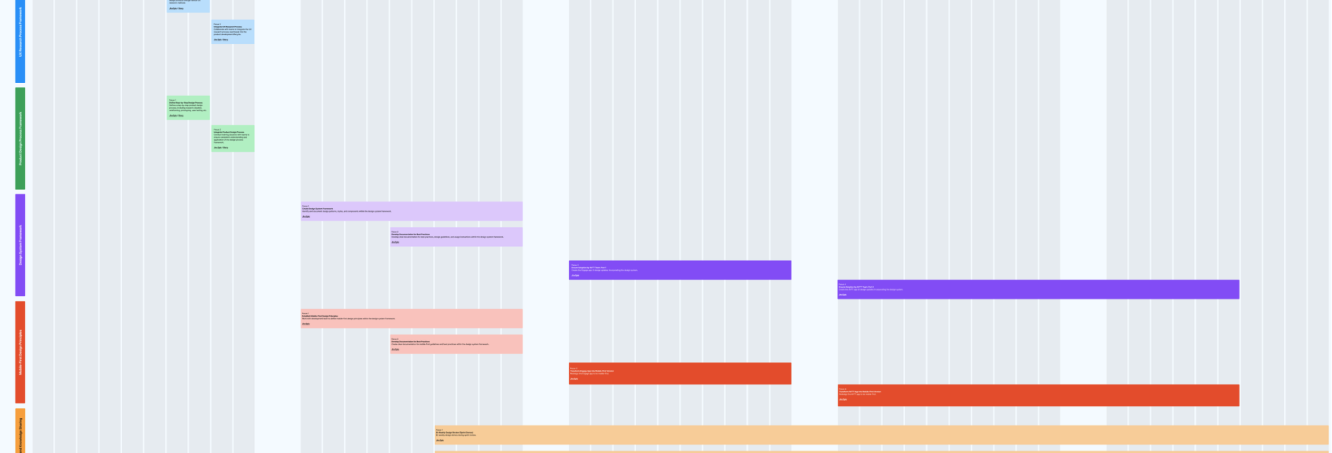Roadmapping, content and design
Reflecting on my content strategy project
As I reflect on my content strategy project this week, I’ve been continuing to make connections between content strategy and design strategy. After reviewing Professor Dr. Kim Sydow Campbell’s final lecture in my TECM 5200: Content Strategy course at the University of North Texas, I was surprised to find even more similarities, this week being between product design road mapping and "Designing Strategic Roadmaps for Content Operations."
In summary, the first phase of my project focused on the discovery stage, where I planned and executed a content inventory while assessing the content’s effectiveness. During the second phase, I conducted a gap analysis, synthesizing my findings to identify discrepancies between the current state and the desired content goals. In the final phase, I’ll develop a strategic content roadmap, using insights from my previous analysis to guide a plan for optimizing content operations.
What did you read or watch that surprised, delighted, or disappointed you? Why?
Reflecting on everything I’ve learned and the new learnings, I was genuinely surprised by how closely my content strategy project aligns with a past project as a Senior Product Designer. Realizing this connection was incredibly gratifying, demonstrating my ability to apply academic learning to real-world scenarios.
When I first joined my current organization, my manager—the Chief Technology Officer—assigned me what felt like an overwhelming task at the time: to assess the existing state of design, refine our design processes, and create a cohesive design system framework. His directives were broad and somewhat ambiguous, especially as I was still acclimating to the team dynamics and the entire product suite.
However, I was determined to rise to the challenge. I began by collecting current design resources and conducting a thorough analysis of our products. This foundational work allowed me to summarize my key takeaways and outline the next steps. I then developed an execution plan that detailed how I would achieve my refinement goals, resulting in a product design roadmap that outlined each step, aligning with our increments and sprints.
Using the double-diamond design process and lean UX principles, I crafted a design process to guide our team in executing my plan. Presenting my deliverables to my manager at each stage ensured alignment and helped build my credibility within the team. My strategic design roadmap and design process implementation proved effective, and I completed the initiative.
What was most meaningful for your own career goals? Why?
This comparison between my coursework and my professional experience has been significant for my career goals. It has validated that my approach is aligned with industry standards and best practices. More importantly, it has alleviated some of the imposter syndrome I’ve been grappling with, reminding me that I can indeed tackle these challenges.
These learnings have boosted my confidence, reinforcing my self-directed learning and hands-on experience as valuable assets in my candidacy as a design leader. I feel more empowered to handle new challenges and know I will contniue to contribute meaningfully.

